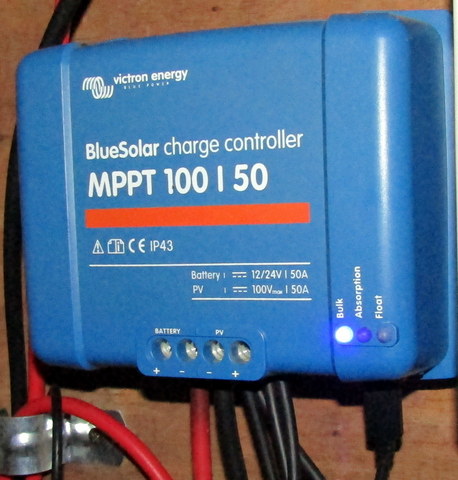We have had some form of alternative energy system based around batteries and some type of power generation, mainly solar and wind for over 40 years. Back in late 2016 we did a serious upgrade to the system. This upgrade got us to the point where it could provide the majority of our electricity needs for the entire house rather than just lights and the fridge.
It has been 8 years and counting since the new system went in, so I thought it was time for an update to cover how we have managed the system and some of the changes (planned and unplanned) that have occurred since.
Batteries
The batteries have continued to work well, but what I didn’t understand initially was that they tend to drive off water comparatively quickly while charging. They need to be topped up every week or two in summer and every month or so in winter, depending on the number of clear days we are getting. Also, because they have a very long life the need to be topped up with the purest water your can get, it must be distilled, de-ionised is not good enough.

The batteries have a ‘maximum’ and ‘minimum’ line on the side and are made of clear plastic so that it is easy to see when the electrolyte level gets too low, and the level to which they require filling. Initially I bought distilled water in 5 litre bottles from a local auto shop, and a normal fill requirement would be one to two bottles depending on how low I let the levels get before refilling. At $8 to $10 per bottles at the time (somewhat more now) I found it started to get a bit expensive, so I bought my own electric distillation unit and found it to work very well.
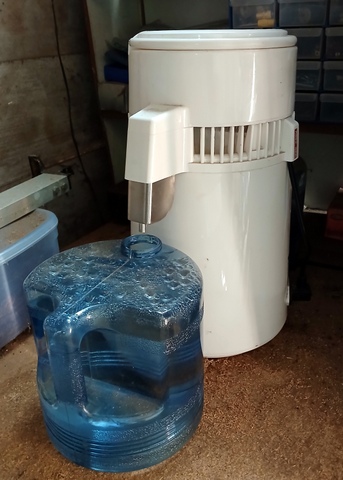
Our distillation unit
Water consumption tends to go up if the batteries are nearing full charge but there is still plenty of power going into the batteries. By using the excess power to run the distiller on long bright days it actually reduces the amount of water driven off so that while producing distilled water, it reduces the batteries need for it! I have a half a dozen of the old 5 litre bottles hanging around and a 20 litre water container with a tap, to hold the distilled water, keeping the batteries going through winter.

Set up to begin topping them up
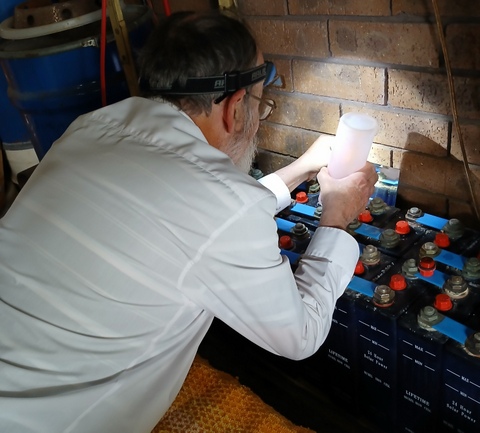
Topping up in action!
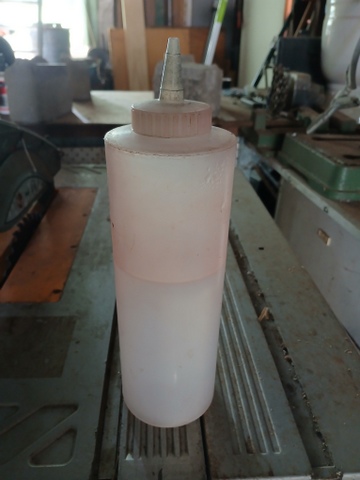
OK, so I pnched it from the kitchen, but it works!
To top up the batteries initially was also a bit of a challenge, particularly the part of one bank that was up against the wall of the house, making it very difficult to see how much I was putting in, and when it had reached the ‘Maximum’ line. What I worked out was the best way to do it was to put on a head torch, grab a mirror and a 500ml plastic squeeze bottle, lean over and arrange the mirror so I could see the lines, lit by the head torch, and jet the water in with the squeeze bottle until the electrolyte solution came up to the ‘maximum’ line. Depending on how long I left it, I can usually top up from two to four cells per squeeze bottle full of distilled water and the whole operation to top up both battery banks (38 batteries in all) takes about half an hour.
According to the information I have seen, the electrolyte should last from seven to ten years, and we are at year eight, so I have a bit of time left before it will need replacing.
Charging
We still have the same number of panels as we had 8 years ago. We don’t seem to be getting the same charge from them however and this may be due to several reasons.
1. There may be some degradation of performance in the panels
2. The panels could require a good clean
3. There has been some unforeseen shading of the panels
When the panels were installed on the western roof of the house there was no shading, but around the same time or a bit before, we relocated the banana circle from the front yard to the back yard and they have found the change of conditions to be so good they have now grown up to the point where late afternoon shading of the panels does happen.
Usage
While electricity production has dipped a bit, our usage has increased. Over the last eight years we have replaced the fridge, and the new larger fridge consumes 20% more power.
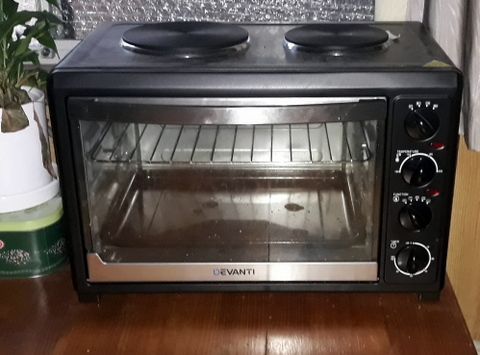
We have also gotten hold of an electric countertop oven with two hotplates, the oven consuming up to 1600 watts (depending on whether both top and bottom heating elements are used) and the hotplates consuming 1000 watts (large hotplate) or 600 watts (small hotplate). We have bought a portable induction hotplate too, that can consume between 400 watts and 2000 watts depending on the cooking setting. Both appliances have helped to reduce our reliance on gas.
Issues
Back in early 2020, I woke up one Friday morning and the solar system was not charging the batteries at all! After much diagnosing I concluded that the MPPT (regulator for the system) had thrown in the towel. After much hassle I was able to get a new one under warranty, but it didn’t solve the problem. After more diagnosing with a multimeter, it turned out that the isolator on the positive wire to the MPPT had burned out. The MPPT also seemed to be getting a bit hot on full charge days because the wire was a bit thin for the amount of current it was carrying. The problem was finally resolved by running some extra wiring, thus reducing resistance and heating.
The MPPT - it was OK!
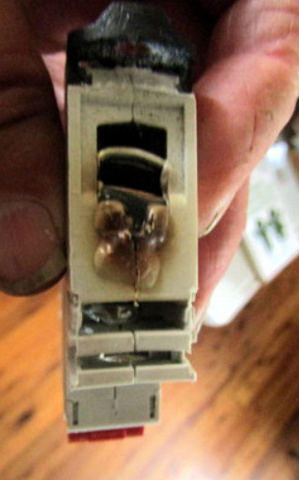
The isolator wasn't!
Final Thoughts
First thing will be to give the panels a clean and see if that makes any difference the charge. Then maybe look at the costs of installing a few more panels and another MPPT to try and even out the charge going to batteries throughout the day. We currently only have two east facing panels.
The Rest of the Story - Links


